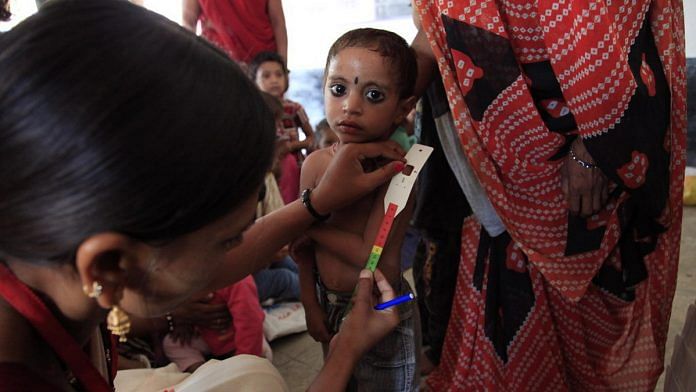New Delhi: The fifth and latest round of the National Family Health Survey (NFHS) has revealed that the percentage of anaemic individuals as well as obese children and adults rose in India in the last five years.
Several of India’s nutritional indicators have worsened since the fourth round of the NFHS, which was held in 2015-16. But the country has hit a major demographic milestone of replacement-level fertility, according to the latest survey conducted by the Ministry of Health and Family Welfare between 2019 and 2021. The survey fact sheet was published Wednesday.
Data showed that India’s fertility rate fell to 2.0. A population is said to stabilise once it achieves what is known as replacement-level fertility (2.1). This is the total fertility rate at which a population exactly replaces itself from one generation to the next.
The NFHS provides information on population, health, and nutrition for India and each state/union territory, including district-level estimates for many important indicators.
Also read: Earth is reaching its expiry date. Better food processing and packaging is key to its health
More children and women are anaemic
The survey revealed that the number of anaemic children under five years of age rose to 67.1 per cent from 58.6 per cent in the last survey. This means that two out of every three children-under-five in India are anaemic.
The percentage of anaemic women rose to 57 per cent from 53.1 per cent, anaemic teenage girls (15-19 years of age) to 59.1 per cent from 54.1 per cent. The number of anaemic men also rose to 25 per cent from 22.7 per cent.
The number of non-breastfeeding children between 6 and 23 months old receiving an adequate diet fell to 12.7 per cent from 14.3 per cent, the NFHS-5 data showed.
Moreover, children-under-five who are severely wasted increased to 7.7 per cent from 7.5. A child is said to be severely wasted if their weight-to-height ratio is minus-3, which indicates that the child is too thin for their height. This is also referred to as acute malnutrition.
The percentage of malnourished children also jumped to 3.4 per cent from 2.1 per cent in the last survey.
Nutrition-related indicators didn’t worsen in children alone. The percentage of obese women increased to 24 per cent from 20.6 per cent, while the percentage for men rose to 22.9 from 18.9.
The NFHS
The NFHS-5 fieldwork was conducted in two phases — phase one from 17 June 2019 to 30 January 2020 in 22 states/UTs, and phase two from 2 January 2020 to 30 April in 14 states/UTs — by 17 field agencies. It gathered information from 6,36,699 households, 7,24,115 women, and 1,01,839 men.
The International Institute for Population Sciences, Mumbai, was the nodal agency for the survey.
The data from NFHS-5 will help in identifying the need for new programmes with an area-specific focus, and groups that are most in need of essential services.
(Edited by Amit Upadhyaya)
Also read: Not just Global Hunger Index, India’s own govt data shows how worried we should be






